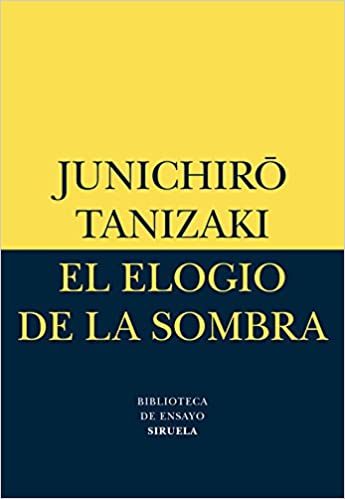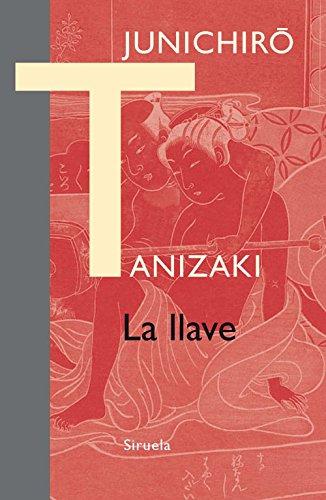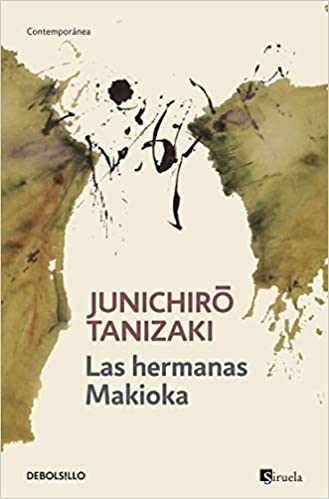Surely the least popular currently in terms of Japanese narrative. And yet Tanizaki It is the pillar on which the deployment of that literature capable of becoming kaleidoscopic from the particularity is sustained., universal from a miscegenation made involution from the avant-garde to tradition. Because in experimentation it is also possible to return to the starting point with all the baggage well prepared to implode whatever is needed in a culture always in need of revolutions.
Inspirational from Mishima in the continuing task of literature made crucible between East and West, it ends up being ascendant in the second level of the Murakami already runaway through the course of that liberation achieved generation after generation. The question was to transform but keeping that core part, the inalienable differential fact, the reasons why a Japanese narrator can achieve existential transcendence even addressing carnal matters.
The overflowing sensuality of the Japanese exploring obsessive versions to unfathomable wells. Literature of forms exposed to the intense lights of the passions but also the shadows of the soul, subjecting Japanese cultural references to their own trompe l'oeil to end up determining that sometimes it is better this way, presupposing purities of the soul as the only way to return monsters , once seen ...
Top 3 Recommended Tanizaki Books
The praise of the shadow
When an essay stands out greatly in an author, a vague sense of failure of literature ends up remaining. Only in this case it is necessary to look for the most opportune excuse, because rarely is a thought so necessary for the synthesis between worlds as disparate as the West run over by its own freedoms capable of deicide, and the East corseted by forms although more spiritually vivid. .
In the West, the most powerful ally of beauty has always been light. On the other hand, in traditional Japanese aesthetics the essential thing is to capture the enigma of the shadow. The beautiful is not a substance in itself but a play of chiaroscuro produced by the juxtaposition of the different substances that is formed by the subtle play of the shadow's modulations. Just as a phosphorescent stone in the dark loses all its fascinating jewel sensation if exposed to full light, beauty loses all its existence if the effects of shadow are removed.
In this classic essay, written in 1933, Junichiro Tanizaki develops with great refinement this core idea of Eastern thought, key to understanding the color of lacquers, ink or the costumes of the nô theater; to learn to appreciate the old appearance of the paper or the veiled reflections in the patina of the objects; to warn us against all that glitters; to capture the beauty in the flickering flame of a lamp and discover the soul of architecture through the degrees of opacity of the materials and the silence and gloom of empty space.
The key
Yes, Pandora's box had a key. And it was only a matter of adjusting it to her closure to dare to take the turn that would unleash hell, temptations, denied pleasures and rivers of blood. Inhabited by the spirit of Sade, Tanizaki versions the libertine and obscene life, adapting it to a Japanese imaginary where the traditional takes root in the space where general morality holds its roots to each of its offspring.
Jealousy, voyeurism and sexual desire make this 1956 novel one of the masterpieces of Japanese erotic literature. Bright, elegant, darkly ironic, The Key is the story of a declining marriage, told through two parallel diaries. After nearly thirty years of marriage, a respectable college professor in his fifties realizes that his relationship with his beautiful young wife Ikuko is draining, and he is unable to satisfy her most intimate needs.
He decides to start a personal diary where he collects his wishes and fantasies with the intention that she read it, and thus rekindle the passion. Soon after, she also starts her own journal. Through writing, they establish a refined and dangerous game of eroticism, charged with jealousy and sexual tension, where voyeurism and exhibitionism play a primary role.
The Makioka sisters
We are about to read the novel in which Tanizaki executes that act of restriction that is to analyze one's own culture from a focus capable of discerning the ethnocentric in order to be able to reveal the pieces and the glue that make up the mosaic of such a special culture. Only someone like Tanizaki, going back and forth from his world, can end up brushing in a plot of manners aspect a large part of the edges that make individual spheres rub against prevailing moral patterns.
The Makioka Sisters is the poignant, yet relentless portrait of a Japanese family and society facing the abyss of modernity. A few years before the start of World War II, in traditional Osaka, four upper-class women try to preserve an ancient way of life that is about to disappear.
Full of beautiful and delicate prints of the customs of the Japanese aristocracy, it captures both social conventions and the intimate anguish of its protagonists. The Makioka sisters, a fundamental work by Junichiro Tanizaki, is the result of a slow and thoughtful writing, in which he sought refuge from the catastrophe of war, recreating a sumptuous and exquisite world with nostalgia for a time and happiness that were fading.



